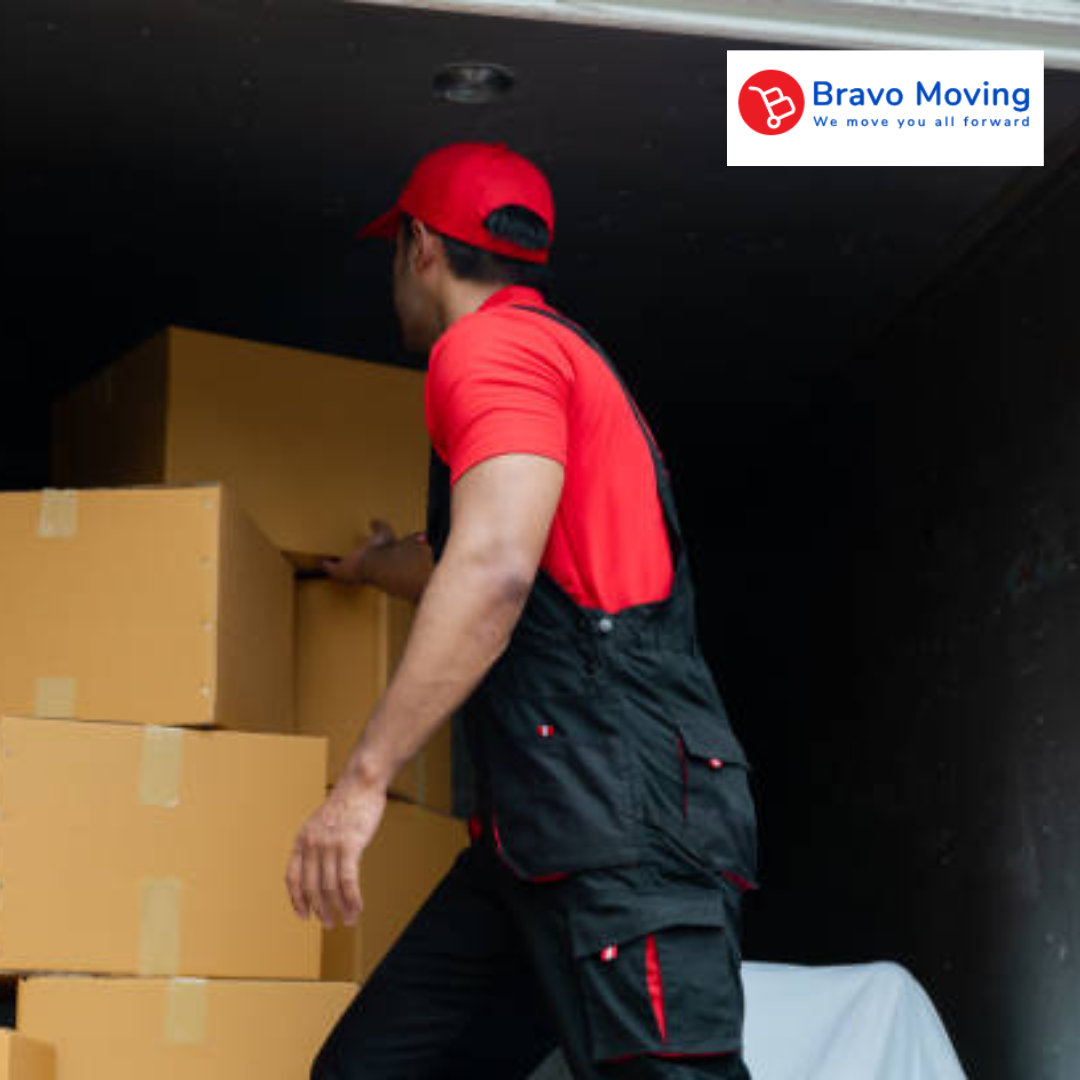Understanding California's Moving Regulations: Everything You Need to Know
Los Angeles, United States - July 25, 2025 / Moving Service Marketing Company /
When planning a move within or out of California, it’s important to understand the state’s specific moving regulations to avoid delays, fines, or unexpected issues. From licensing requirements for movers to proper documentation and insurance rules, knowing what’s expected can help you stay organized and protected throughout the process. Taking the time to get familiar with these guidelines can make a big difference in how smoothly your move goes. In this guide, Bravo Moving breaks down the key regulations every California mover should know to ensure a safe and compliant relocation.
California Moving Permits and Fees
When moving within or into California, permits and fees are more than minor inconveniences—they are necessary to comply with local regulations. One common requirement is obtaining parking permits for moving trucks, especially in busy cities like Los Angeles or San Francisco. These permits typically cost between $35 and $80, depending on the location, so it’s important to check specific city requirements in advance.
However, parking permits are only one part of the process. California also requires weight fees, especially if you’re using a rental truck like a U-Haul. Knowing local bridge weight limits is essential; exceeding them can lead to fines and complicate your move. Ensure your rental truck meets these limits as part of your pre-move preparation.
Don’t forget about environmental fees. Larger trucks may be charged extra based on their size and emissions standards to promote eco-friendliness and reduce emissions
City regulations can also impact your move. Each city has its own rules for fees and permits. For example, while some cities charge a flat fee for parking permits, others may have a more complicated application process that takes several business days for approval. A little research can save you both time and money.
Doing your homework before moving day is key. Understanding permit requirements and fees, and consulting local resources or moving companies familiar with the area, can help you navigate these regulations more easily. Taking care of these details ahead of time will ensure you stay compliant and keep the moving process stress-free.
State Law Compliance for Movers
Following state laws isn’t just a box to check—it’s key to a smooth move in California. Starting July 1, 2025, the Bureau of Household Goods and Services (BHGS) will oversee all residential moving companies in the state. This new regulation ensures that movers meet safety and operational standards, providing better protection and trust for consumers.
Hiring a licensed mover isn’t just about convenience—it’s about protecting your belongings. A valid license shows the company is accountable and follows the rules.
For example, moving companies need a special permit called Cal-T to operate. Consumers should always verify a mover’s license using the Movers License Search tool on the BHGS website. This simple step can mean the difference between a smooth move and a major headache.
Importance of Written Agreements
In addition to licensing, movers must provide an official moving services agreement for moves scheduled at least three days in advance. This document isn’t just extra paperwork—it includes important details like pricing, timelines, and responsibilities, protecting both you and the moving company. It acts as a safety net to ensure you won’t face unexpected charges or delays.
But what happens if something goes wrong, like damage or loss during the move?
Claims Process Insights
To handle these situations effectively, consumers must file claims in writing within nine months of delivery. Think of it as a way to protect yourself during potentially stressful times. It’s also crucial to keep accurate records—signed documents, photos, or videos of your belongings before the move can be invaluable evidence if disputes arise. Solid preparation can significantly impact the success of your claim.
Understanding your rights as a consumer means knowing the rules that movers must follow. Use resources from the BHGS to learn your rights, ask the right questions, and make informed decisions about your move.
The risks of hiring unlicensed movers are clear. According to CPUC data, 30% of reported moving fraud cases in 2022 involved unlicensed companies. This highlights the importance of verifying licenses and knowing your rights to ensure a smooth and secure moving experience.
With these regulations, choosing reputable movers is a key step toward a hassle-free relocation.
Choosing Licensed Moving Companies
Choosing the right moving company is crucial. In California, licensed movers meet the standards set by the Bureau of Household Goods and Services (BHGS), ensuring they operate legally and adhere to safety, reliability, and service quality requirements. Knowing you're working with professionals committed to excellence gives you peace of mind.
Verifying a moving company's license is simple and essential. Visit the BHGS website and use their Movers License Search tool to confirm if a mover is authorized. You can also check for complaints or issues against them to gauge their reputation. For extra assurance, ask the movers for proof of their license—reputable companies will happily provide it.
Remember, hiring a licensed mover isn’t just about following the rules; it’s about trust and accountability. If something goes wrong during the move, such as lost or damaged items, a licensed mover gives you a clear path to file complaints or claims. An unlicensed mover, however, leaves you without much recourse.
Preparing for a move can be stressful, but these steps can help reduce anxiety and ensure a smoother experience. A little effort up front can save you from major headaches later.
Rules for Transporting Vehicles
When moving a vehicle within or to California, following the state’s regulations to protect the environment and public safety is important. These rules aren’t just bureaucracy—they ensure all vehicles meet California’s strict emissions standards, which help improve air quality. For example, heavy-duty vehicles alone account for over 50% of nitrogen oxide emissions, even though they make up only a small percentage of vehicles on the road. This makes compliance with these regulations essential.
A smog check is mandatory for any vehicle registered in California. It ensures that your car’s emissions meet the state’s limits and must be done at a certified station. Skipping this step can cause delays or even delay your registration.
Getting your smog certificate right the first time will save time and money. Once you have it, the next step is verifying emissions compliance. California has specific emissions laws that vary by vehicle model, and out-of-state vehicles may need modifications to meet these requirements. For instance, older vehicles from other states might require upgrades to qualify for registration. To avoid surprises, checking your vehicle’s emissions requirements on the CARB website before your move is a good idea.
After ensuring your vehicle meets emissions standards, you must complete the DMV registration process. This requires your smog certificate, proof of emissions compliance, identification, and possibly proof of residency if you’ve recently relocated.
By following these steps—getting a smog check, verifying compliance, and preparing the right documentation—you’ll make the transition to California much smoother. Being prepared saves time and ensures your move is hassle-free and compliant with state laws.
Essential Moving Documentation
Proper documentation isn’t just a suggestion—it’s essential for ensuring your move goes smoothly from start to finish. A key piece is a detailed inventory list. This list should include every item you’re moving, along with its condition and value. Taking photos of your items as you pack can also help by providing proof in case something is lost or damaged during the move.
Think of these documents as your roadmap for the moving process. Things can quickly become chaotic without them, leading to errors like misplaced boxes or lost items. It’s like driving cross-country without a GPS—frustrating and avoidable with proper preparation.
Another important document is the moving contract. This outlines your agreement with your movers, including costs, services, and insurance coverage. Be sure to read the fine print to know what’s covered and what isn’t. Understanding the terms can save you from surprises on moving day.
You’ll also want to secure insurance documents to protect your belongings. Most moving companies offer basic insurance, but you might need additional coverage for high-value items. Ensure you understand how claims are processed, giving you peace of mind during the move.
In some cases, you may need to obtain permits, especially if you’re moving within California and plan to use large trucks that occupy public spaces for extended periods. Check local regulations well in advance, as getting permits can take extra time.
To stay organized, create a folder for all your moving paperwork. Include your inventory list, contracts, insurance documents, and any permits. This helps you quickly access critical information if any issues arise, like a question from your movers or a disagreement with your new landlord.
Having all the necessary documents will make your move much easier and help ensure a smoother transition to your new home.
Checklist for a Compliant Move
When preparing to move, the last thing you want is an unexpected issue causing delays or complications. A detailed checklist can serve as a guide, helping you navigate the legal requirements and logistics. Each step on the list is essential to ensure your move is smooth and compliant.
Checklist Items
- Secure Necessary Permits: Before loading up the moving truck, check with your city’s regulations. Depending on where you're moving from and to, you may need various parking permits, especially in an area with limited street access. Knowing ahead of time what permits you'll need avoids any last-minute scrambling.
- Verify Movers' Licenses: Hiring a trustworthy moving company is critical. Ensure that the movers you choose are certified by the California Public Utilities Commission (CPUC). This certification guarantees compliance with important safety and regulatory standards.
- Smog Check for Vehicles: If you're using personal vehicles for your move, remember that they must meet California’s stringent emissions regulations. Do a smog check before your moving day to ensure compliance and avoid fines that may arise post-move.
- Gather Essential Documents: Proper documentation is key for a seamless move. Make all moving contracts easily accessible, along with inventory lists detailing what items are being transported. This will help in case of disputes and ensure nothing gets lost during transit.
- Compliance Check: Review these steps frequently as your move date approaches. When feeling overwhelmed, revisiting your checklist can remind you of any regulatory aspects that may have been overlooked.
Taking these steps sets the stage for a smooth and efficient move that meets California's regulations and requirements.
Moving to another state means more than packing your belongings and heading out. It also involves understanding and adhering to a new state's regulations and requirements. California, in particular, has strict laws and guidelines regarding moving, so it's important to familiarize yourself with them before moving. By following this checklist, you can ensure that your move complies with California's regulations. This will save you from potential issues or delays during the move and help you start on the right foot in your new home state. Remember to stay organized, ask for help, and double-check for compliance. Contact Bravo Moving for more information or assistance with your move.

Contact Information:
Bravo Moving
937 S Alameda St 937 S Alameda St unit b
Los Angeles, CA 90021
United States
Bravo Moving
(888) 503-0990
https://bravo-moving.com/




